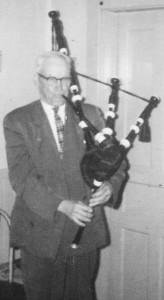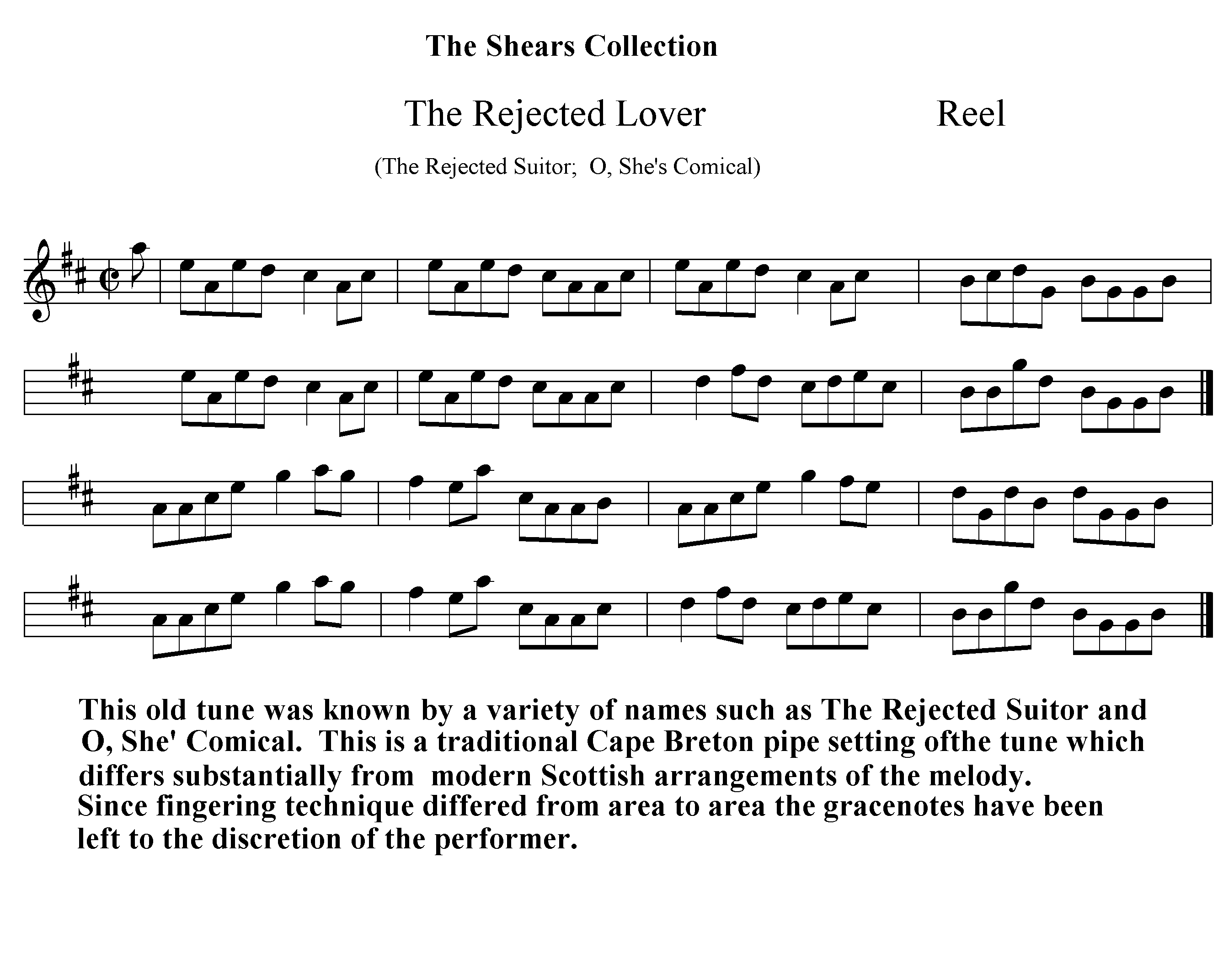By Barry Shears

Pictured here is Joe Hughie MacIntyre of French Road / Grand Mira. Joe Hughie was the son of Donald “Domhnuil mac Thormaid `ic Dhomhnuil `ic an Tàilleir”
“Oh there were good pipers. Of course, they had the Gaelic touch to the tunes. There is a lot of that lost. A lot of the Gaelic touch is lost from the tunes today. I suppose they cannot help it. They are only playing it correctly by note. They are only playing them as correct as they are written. But you haven’t got the memory, the history… You didn’t hear them played, so you are only going following the style that is in the book and there is a lot missing from the book. There’s only the framework.” Joe Neil MacNeil
Joe Neil MacNeil was describing the pipe music of a bygone era, as played by the last of the old style players in Cape Breton. For most of the 19th and early 20th centuries pipe music was nurtured in the home, in a largely Gaelic environment and in several instances by women of the house, or extended family. Many of the melodies had Gaelic words that helped establish rhythm and phrasing, in addition to being an aid in memorization. This was Gaelic music. It was dance music, and they were delighted to share their music and their experiences with anyone who made time to visit them. Sadly, by the end of the 20th century there were only a handful of these musicians still alive.
But what of their music? It was different, but not in a bad way. For pipers trained in modern bagpipe technique, it sounds foreign and therefore some-how incorrect.
But the playing and recollections of these senior musicians plainly illustrates what a wonderful and diverse tradition of dance music existed in Cape Breton, and most of the Nova Scotia Gaidhealtachd, earlier last century. Pipers such as Art Severance of Foruchu supplied first-hand accounts of piping for solo and group step-dancing in the 1920s and 30s from Gabarus Lake to Meat Cove to Inverness Town; Alex Currie was very generous with his music and memories, and the MacIntyre pipers of French Road, Sydney and Glace Bay added considerably to my understanding of what constituted traditional piping in Cape Breton. I consider myself fortunate to have met these men and collected some of their memories and music.
Some of the recordings available to me were not professionally recorded and they reveal some unbalanced chanters and drones not quite in tune, but these were men in their 60s and 70s and certainly not in their prime. One has only to look beyond these minor tonal issues to hear the real value of these homemade recordings. It’s the way in which the music was interpreted and expressed, and the “freshness” often found in the regional settings (arrangements) of many common pipe tunes. Contrary to modern interpretation, there never was a single definitive style of performance among the old pipers in Cape Breton. It varied from area to area, community to community.
After cross referencing many of the tunes found on these recordings, with collections of bagpipe music published in Scotland in the 19th century, one is immediately struck by the quality of the arrangements. The music was not all from the Old Country. Locally composed tunes took their rightful place alongside many of the melodies brought from Scotland. Unfortunately, most of these local compositions are not easily retrieved since they were never written down and instead have to be painstakingly gleaned from archival recordings.
In the past few years, I’ve had more time to listen and reflect on the research recordings I’ve complied since the 1980s and have come to realize that the old pipers had a powerful influence on the style of music I play as well as many of the tunes I’ve memorized over the years. As I listen again to these taped interviews and performances, I am reminded of the invaluable legacy these musicians have left behind.
Since many of the immigrant pipers to Cape Breton couldn’t read or write music in staff notation, they depended on lilting or a form of singing known in Gaelic as Port a Beul (Mouth Music). Gaelic was the first language of these musicians and according to local sources, almost every tune had Gaelic words to fit the music. Although Joe Neil MacNeil was not a singer, he knew the words to dozens of pipe tunes. He had a close association with one of Cape Breton’s finest dance pipers, Neil R. MacIsaac of Beinn Eoin. Neil R died in 1971 and regrettably there no known recordings of his music. Neil R learned a lot of his music and Puirt a Beul from his father, Ruairidh Shim, whose maternal grandfather had been a piper at Waterloo, 1815. The staff notation printed here was based on the playing of the late Alex Currie, another fine dance player who grew up about 30 miles from Neil R MacIsaac.
Fhir nan casan caola, cha leiginn ann `am leabaidh thu (O man of the skinny legs, I wouldn’t let you in my bed)
Fhir nan casan caola, cha leiginn ann `am leabaidh thu (O man of the skinny legs, I wouldn’t let you in my bed)
`S tàr ort, `s tàr ort, `s tàr ort mum beir iAd ort (Flee, flee, flee before they catch you)
Tàr ort mun tig a’ latha (Flee before the break of day)
Tàr ort mum beir iad ort (Flee before they catch you)
Tàr ort mun tig a’ latha (Flee before the break of day)
Tàr ort mum beir iad ort (Flee before they catch you)
The majority of this article previously appeared in the magazine An Rubha published by The Highland Village Museum, an outdoor living history museum that tells the story of Gaelic settlement in Nova Scotia. It is located on a stunning 43-acre property overlooking the majestic Bras d’Or Lakes in Iona, Nova Scotia, the heart of central Cape Breton. Thanks to the museum for permission to republish.
Barry Shears is a Cape Breton piper, researcher and author of three tune-books arranged for pipers. His specialty is traditional dance music played in the Gaelic style. Barry is a founding member of Alternative Pipers of North America.

[…] Mar is léir dhomh fhìn/ As I See It: Pipe Music in Cape Breton […]